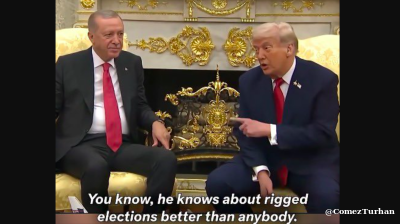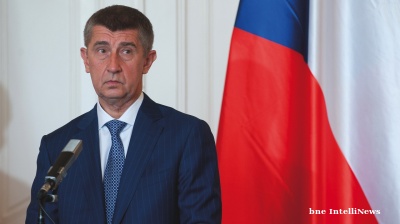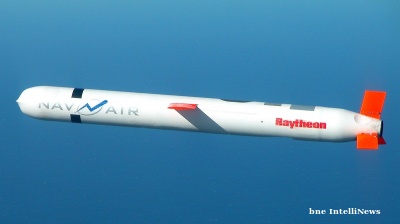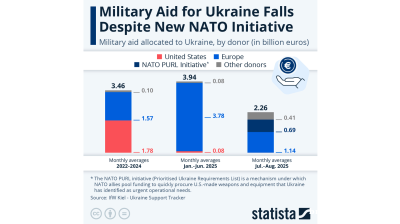The historic August 8 deal in Washington between Armenia and Azerbaijan marked Russia’s strategic defeat in the South Caucasus and heralded the US’ noisy entry into the region.
Under the patronage of the United States, Armenia and Azerbaijan initialed a peace agreement. Although this is not the final signing, it closes the active war phase of the conflict. This deal between US President Donald Trump, Armenian Prime Minister Nikol Pashinyan and Azerbaijani President Ilham Aliyev placed a tombstone on Russia’s monopoly of "conflict resolution" in the region. The United States is seizing from Russia the role of main mediator in the Armenian-Azerbaijani process.
Meanwhile, five years ago, Russian President Vladimir Putin had big ambitions. The November 9 statement that ended the 44-day war in 2020 was personally authored by the Russian president, dismantling the Minsk Group format involving the US, France and Russia. Having pushed the US and France out of the process, Russia not only failed to consolidate itself in the region but today is itself being expelled from Armenia-Azerbaijan processes (border delimitation, unblocking of communications, peace negotiations).
This defeat is Putin’s own doing, the result of a strategic miscalculation. By deploying troops to Karabakh in 2020, he considered the South Caucasus permanently conquered. Russia occupied northern Georgia, maintained a military base in Armenia and stationed border guards on the Armenian-Turkish and Armenian-Iranian borders. For Putin, the entry of Russian peacekeepers into Karabakh was supposed to ensure long-term influence in Azerbaijan’s internationally recognised territory.
However, the “Ukrainian nightmare” that has lasted four years has seriously undermined Russia’s geopolitical ambitions. Unable to defeat Ukraine, and having diverted enormous resources to that front, Russia is effectively being pushed out of the South Caucasus — a region it has considered within its sphere of influence for centuries.
In 2023, 150,000 Armenians from Karabakh were forcibly displaced, and Azerbaijan fully took control of the area. Exhausted by the war against Ukraine, Putin failed to fulfill the function of ensuring the safety of Armenians. As a result, months after the forced displacement, Russia was compelled to withdraw its troops from Karabakh — an unmistakable sign of retreat.
From 2021 to 2024, during Azerbaijani attacks on Armenia’s territories, Moscow refused to assist Yerevan, leaving it alone against Azerbaijani aggression. As a result, Russia lost its military-political alliance with Armenia but also failed to secure Azerbaijan as its main outpost in the South Caucasus. Today, both Yerevan and Baku — having tense relations with Moscow — reject playing by Russian rules and are inviting the United States into the region.
From 2020 to 2023, the Kremlin was the main venue for Pashinyan-Aliyev meetings. However, the Washington deal tears up and throws into the trash the November 9, 2020 statement authored by Putin.
Putin ceases to be a factor. Having lost vast military and political resources in Ukraine, Russia has also lost the loyalty of Armenia and Azerbaijan, who have abandoned Russian mediation and, for the past 1-2 years, negotiated in a bilateral format. With the initialing of the Armenia-Azerbaijan agreement, the diplomatic initiative passes to the United States.
On August 8, the Armenia-Azerbaijan peace treaty negotiation process passed under the political and diplomatic patronage of the United States. The US is not merely challenging Russia’s hegemony in the region — it is assuming the role of hegemon. Washington aspires to become the rule-setter. The US is not only committing to securing the signing of the Armenia-Azerbaijan Peace Agreement but is also launching a strategic economic project with Armenia.
In Washington, Pashinyan and Trump concluded a deal to establish a joint Armenian-American venture. Over the next 2–3 years, this venture will build rail and road connections linking Azerbaijan’s mainland to Nakhichevan, and then to Turkey. With US financial investment, oil and gas pipelines and cable lines will also be built, turning Armenia into a transit state.
Also in Washington, ExxonMobil and Azerbaijan’s SOCAR signed a memorandum of partnership. It is likely that Azerbaijani oil and gas will be transported via Armenia to Eastern Europe through the US company. Thanks to this communications hub, the US and Armenia will receive billions of dollars in customs and transit revenues, to be shared between them. This mega-economic project will institutionally cement Washington's military-political influence in the region.
Russia is no longer even a regional power here. Its major defeat has a name: “Trump’s Route for International Peace and Prosperity” (TRIPP).
The "Trump’s Route" project is bringing major US financial and economic interests into the region. The United States aims to secure control over one of the overland routes connecting Asia to Europe. China, together with Azerbaijan and Georgia, is already in the implementation phase of the Belt and Road initiative. Through the “Trump’s Route” project, the US is not only pushing Russia out of the region but also countering China’s growing influence there. By entering Armenia with this communications megaproject, Washington is taking control of the South Caucasus’ second branch of the Europe-Asia trade route. This became possible because Armenia refused to grant Russia oversight rights over the road passing through its southern districts. Azerbaijan calls it the “Zangezur Corridor,” which is already known will not be under Russian control, and will instead be called “Trump’s Route”. Under the Washington deal, Armenia will retain sovereignty over this road.
Armenia has refused to allow Russian Federal Security Service troops — who sought to perform customs and security functions — to be stationed on its roads. Despite its limited resources, Armenia resisted Putin’s pressure. Four years of Azerbaijani military aggression against Armenia have ended in failure. Armenia's stance gave President Trump the opportunity to secure an easy victory in the Caucasus by gaining the chance to implement a strategically significant communications megaproject. This will consolidate US political influence in the region.
The Russian foreign ministry, however, still tries to pretend that “the Russian Tsar” is not naked and that Russia still has a role to play. “The trilateral agreements reached with Russia’s participation remain relevant, as none of the parties has abandoned them,” said Russian MFA spokesperson Maria Zakharova, seemingly ignoring Armenia’s agreement on the “Trump’s Route” project.
Russian diplomacy never publicly admits defeat. By congratulating Armenia and Azerbaijan on the initialing of the agreement in Washington, Moscow is trying to pretend that its retreat is deliberate rather than forced.
Historically, the South Caucasus has been part of the Russian Empire and the Soviet Union. The Armenian-Azerbaijani conflict, which lasted for 35 years, was the instrument by which Russia maintained military-political influence in the region. Armenians and Azerbaijanis killed each other over Karabakh, while Russia sold weapons to both, keeping the puppet strings to control the two countries in its hands. With the peace deal brokered in Washington by President Trump, Armenia and Azerbaijan are rejecting the prospect of remaining Russian puppets and are beginning a new era of independent political and economic relations. Russia’s ally has always been the “conflict”, not Armenia, and not Azerbaijan.
The historic significance of the Washington meeting lies in the fact that Russia is losing its main lever of control — because the “conflict” can now be resolved. Armenia and Azerbaijan, by signing a joint declaration with the US, have agreed on the peace deal. Without the “Armenian–Azerbaijani conflict”, Russia has no tool for intervention.
Aliyev and Pashinyan acknowledged that after a 35-year conflict, which brought unspeakable human suffering, favourable conditions have been created for establishing good-neighbourly relations between the Armenian and Azerbaijani peoples, based on the principles of the inviolability of international borders and the inadmissibility of the use of force to acquire territory. Armenia and Azerbaijan agreed to close the chapter of hostility and to decisively reject any future attempt at revenge. Trump is confident that Pashinyan and Aliyev will become friends, but if problems arise, "they can call me, and I’ll sort it out."
The United States is entering the South Caucasus as the guarantor of Armenian-Azerbaijani peace and is taking responsibility for supporting the signing of the final Peace Agreement. The US is becoming the number one player in the South Caucasus, with its unquestioned authority recognised by both Armenia and Azerbaijan. Russia no longer has any role to play. Moscow lacks the tools to disrupt the US entry or to provoke a new Armenian-Azerbaijani war — except for Armenia’s pro-Russian opposition, which in recent weeks has suffered blows from Pashinyan’s government following the exposure of a “failed coup attempt” case.
Russia’s other lever is Iran, which is sensitive to the growth of US influence. Although Iran welcomed the initialing of the Armenia-Azerbaijan agreement, it has expressed concerns about the negative consequences of any type of external interference, especially near its common borders, which could undermine regional security and stability.
Moscow will still try to play the Iranian card to block the growth of US influence, but Yerevan and Baku may effectively neutralise Tehran’s concerns by offering it economic benefits from the unblocking of the region. Official Yerevan will seek constructive and sincere dialogue with Iran to prevent provocations instigated by Russia.
Putin has not only lost his ally — the “conflict” — in the South Caucasus but has also ceded to the US one of the Caucasian arteries of the “Middle Corridor,” which will now bear Trump’s name. We are witnessing an unprecedented collapse of Russia’s position in the South Caucasus, the consequences of which Moscow will feel for a long time. The Russia-Ukraine war has the potential to continue, which means that soon Russia will not have the additional resources to restore its positions in the South Caucasus. The US is putting down institutional roots in the region, changing the geopolitical colour of what was once a zone of Russian influence.
Robert Ananyan is a journalist based in Yerevan, Armenia, who focuses on the political and security problems of the South Caucasus.
Opinion

COMMENT: Hungary’s investment slump shows signs of bottoming, but EU tensions still cast a long shadow
Hungary’s economy has fallen behind its Central European peers in recent years, and the root of this underperformance lies in a sharp and protracted collapse in investment. But a possible change of government next year could change things.

IMF: Global economic outlook shows modest change amid policy shifts and complex forces
Dialing down uncertainty, reducing vulnerabilities, and investing in innovation can help deliver durable economic gains.

COMMENT: China’s new export controls are narrower than first appears
A closer inspection suggests that the scope of China’s new controls on rare earths is narrower than many had initially feared. But they still give officials plenty of leverage over global supply chains, according to Capital Economics.

BEYOND THE BOSPORUS: Consumed by the Donald Trump Gaza Show? You’d do well to remember the Erdogan Episode
Nature of Turkey-US relations has become transparent under an American president who doesn’t deign to care what people think.




